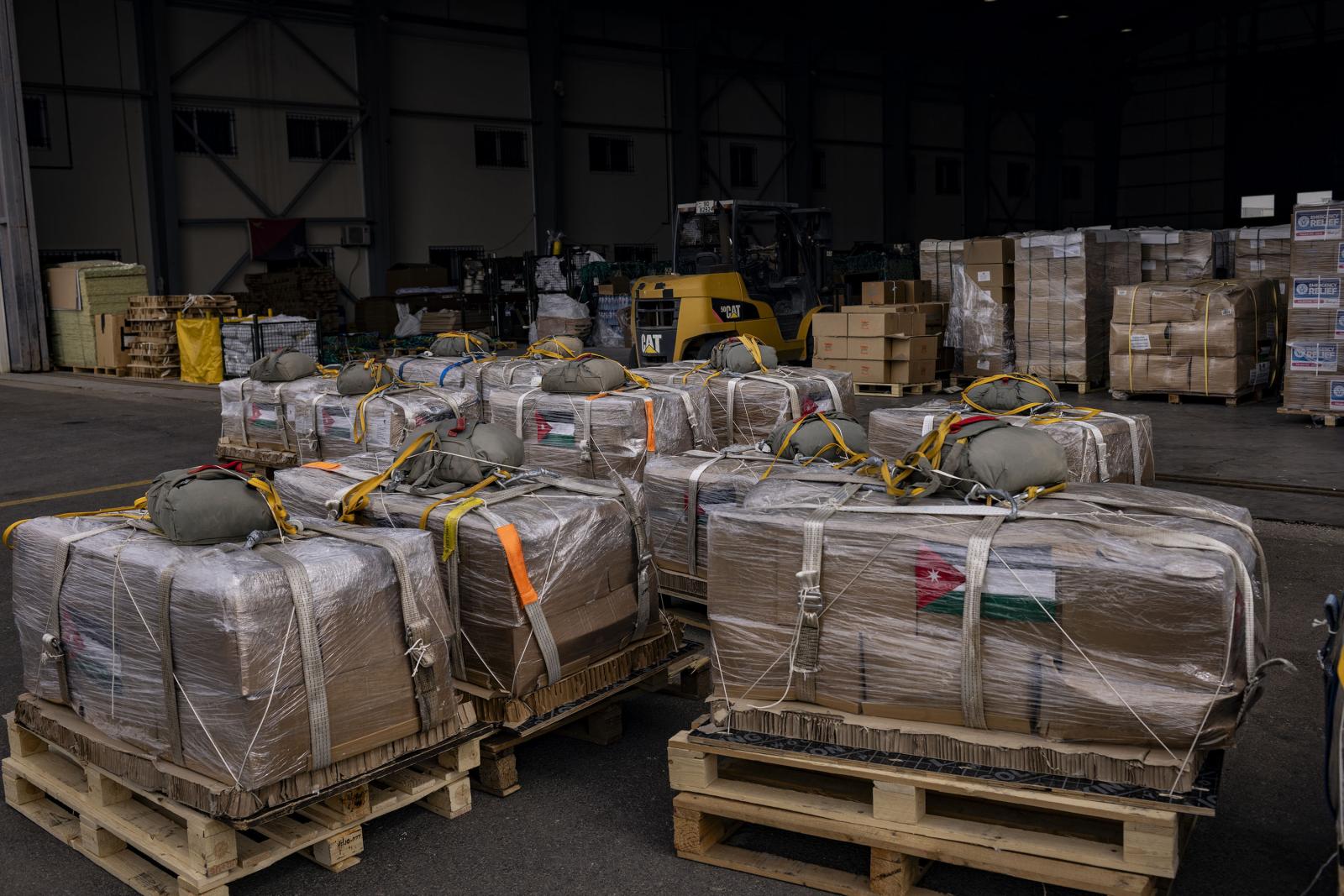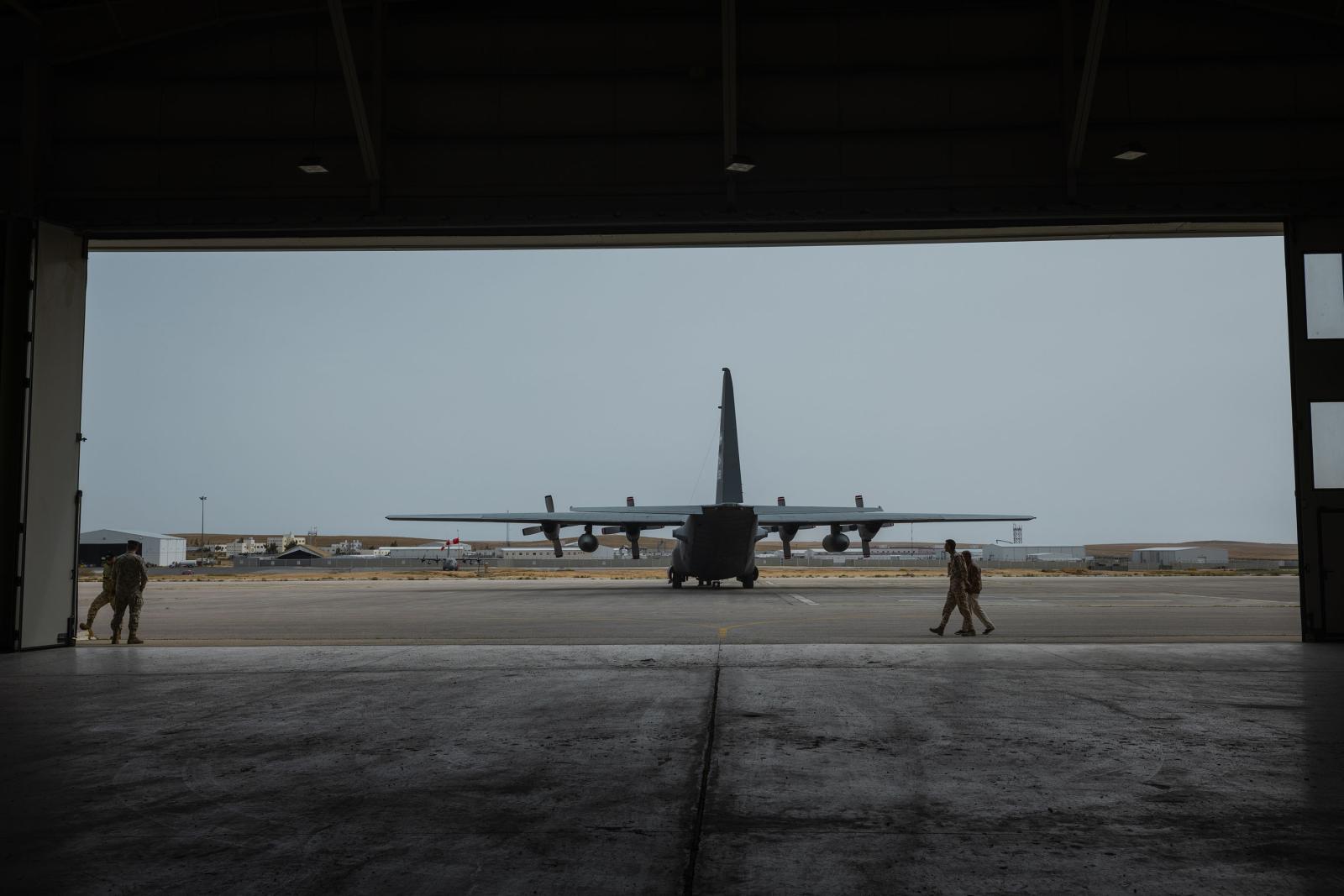Public Story
GAZA air drop aid
Summary
A Times Photographer Went on a Gaza Airdrop. Here’s What He Saw.
As humanitarian groups warn of a looming famine in northern Gaza, airdrops, are playing a prominent role in efforts to deliver food and supplies, even if they are less efficient than delivery by truck.A Times Photographer Went on a Gaza Airdrop. Here’s What He Saw.
Diego Ibarra Sanchez spent several hours with the crew of a Jordanian Air Force plane as they ferried aid packages into northern Gaza.As humanitarian groups warn of a looming famine in northern Gaza, airdrops, are playing a prominent role in efforts to deliver food and supplies, even if they are less efficient than delivery by truck.
Photographs by Diego Ibarra Sanchez
Text by Lars Dolder
The huge rear gate of the Jordanian air force cargo plane slowly lowers like a stiff iron jaw, revealing a hazy blue sky and, far below, the battered landscape of northern Gaza.Inside the plane’s cavernous hold, the aid being delivered by the crew is lined up in neat rows: chest-high bundles of boxes stacked atop wooden pallets, each one bound by shrink-wrap and heavy straps and marked with images of Jordan’s flag.Now, as the light and the sound rush in, the bundles slide down rollers in the floor and disappear out the door, floating down under billowing parachutes as a silent, and most likely inadequate, offering to the desperate population below.With humanitarian groups and others sounding the alarm over a looming famine in northern Gaza and hunger widespread throughout the territory, airdrops are playing a prominent role in efforts to deliver food, water and urgent supplies to Palestinians.On Thursday, the Jordanian air force allowed a photographer for The New York Times on one of its planes to observe the airdrop of bundles of aid across northern Gaza. The trip, taking off and returning from Jordan’s King Abdullah II air base, east of Amman, took several hours.
Countries including Jordan, the United States, Britain and France say the drops are helping compensate for a steep fall in the amount of aid entering Gaza by truck since Oct. 7, when Hamas led a deadly attack on Israel, and Israel responded with a monthslong military assault.
The United Nations and aid groups have complained that deliveries by truck are being slowed by Israel’s insistence on inspecting all supplies going into Gaza. Most aid trucks have been allowed in through just two border crossings — one from Egypt and one from Israel — in southern Gaza.Israel has maintained that disorganization among aid groups is responsible for slow deliveries of aid to Palestinians and that much of the aid is diverted to Hamas or the black market, though it is not possible to verify those claims.One of the few alternatives is dropping supplies from the sky, a process that takes only minutes in the air but extensive bureaucracy and hours of preparation on the ground.The dozens of pallets pushed out of the planes on Thursday included thousands of meals, the Jordanians said. But airdrops are inefficient and expensive, humanitarian officials say, with even big military cargo planes delivering less than a single convoy of trucks could.And the airdrops can be dangerous: This week, Gazan authorities said 12 people drowned while trying to retrieve assistance that had fallen into the ocean.
https://www.nytimes.com/2024/03/30/world/middleeast/gaza-aid-airdrop.html
















